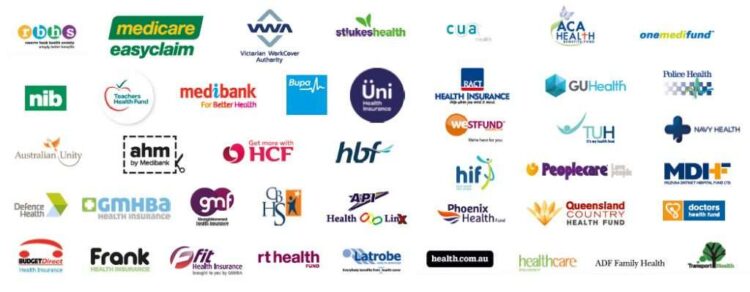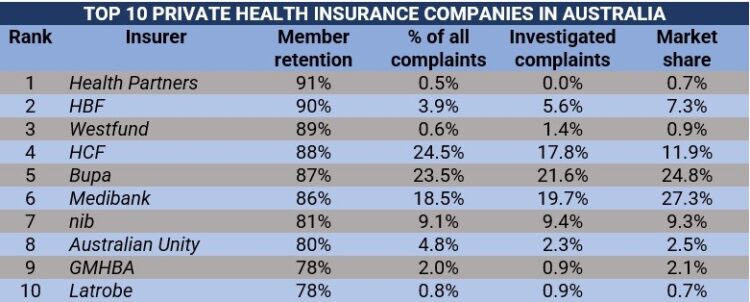
Can I afford health insurance? It’s a question many people ask, especially considering the rising costs of healthcare. Navigating the world of health insurance can be confusing, with various plans, premiums, deductibles, and copayments to consider. This guide aims to demystify the process, helping you understand your options and make informed decisions about your health coverage.
We’ll explore the factors that influence health insurance costs, including your age, location, coverage level, and health status. We’ll also delve into your financial situation, discussing methods for calculating your income and expenses to determine if health insurance fits within your budget.
Understanding Health Insurance Costs
Health insurance costs can vary significantly depending on a number of factors. Understanding these factors can help you make informed decisions about your health insurance coverage.
Factors Affecting Health Insurance Premiums
Several factors influence the cost of your health insurance premiums. These include:
- Age: Generally, older individuals tend to have higher premiums due to a higher likelihood of needing healthcare services.
- Location: The cost of healthcare varies across different geographic areas, which can impact your premiums.
- Coverage Level: More comprehensive plans with wider coverage typically come with higher premiums.
- Health Status: Individuals with pre-existing health conditions may face higher premiums as they are considered higher risk.
Breakdown of Typical Health Insurance Costs
Health insurance costs typically include the following components:
- Monthly Premiums: This is the recurring cost you pay to maintain your health insurance coverage.
- Deductibles: The amount you must pay out-of-pocket before your insurance coverage kicks in.
- Copayments: Fixed amounts you pay for specific services, such as doctor visits or prescription drugs.
- Coinsurance: A percentage of the cost of covered services you pay after meeting your deductible.
Examples of Different Health Insurance Plans and Their Associated Costs
Different health insurance plans offer varying levels of coverage and costs. Here are some examples:
- Bronze Plans: These plans have the lowest monthly premiums but also have the highest deductibles and coinsurance. They are suitable for individuals who are generally healthy and expect to use minimal healthcare services.
- Silver Plans: These plans offer a balance between premiums, deductibles, and coinsurance. They are a popular choice for individuals who want moderate coverage.
- Gold Plans: These plans have higher monthly premiums but lower deductibles and coinsurance. They are suitable for individuals who expect to use healthcare services frequently.
- Platinum Plans: These plans offer the most comprehensive coverage with the lowest deductibles and coinsurance, but also have the highest monthly premiums. They are suitable for individuals who require extensive healthcare services.
Assessing Your Financial Situation
Before diving into the world of health insurance plans, it’s crucial to understand your current financial standing. This involves evaluating your income and expenses to determine how much you can realistically allocate towards health coverage.
Understanding Your Income and Expenses
A clear picture of your income and expenses is essential for assessing affordability. Here’s a breakdown of how to calculate these:
Calculating Your Monthly Income
To determine your monthly income, add up all your regular sources of income. This includes:
- Salary or wages: Your regular paycheck from your employer.
- Self-employment income: Earnings from your own business or freelance work.
- Investment income: Interest, dividends, or capital gains from investments.
- Pension or retirement income: Payments received from a pension plan or retirement savings.
- Other income: Any other regular sources of income, such as alimony or child support.
Tracking Your Monthly Expenses
Once you know your income, it’s time to track your monthly expenses. This includes:
- Housing: Rent or mortgage payments, property taxes, homeowners’ insurance, and utilities.
- Transportation: Car payments, gas, insurance, public transportation, and parking.
- Food: Groceries, dining out, and takeout.
- Healthcare: Out-of-pocket medical expenses, prescription drugs, and over-the-counter medications.
- Debt payments: Loan payments for student loans, credit cards, and personal loans.
- Personal expenses: Clothing, entertainment, subscriptions, and other discretionary spending.
- Savings and investments: Contributions to retirement accounts, emergency funds, and other savings goals.
Key Financial Factors to Consider
Several financial factors play a crucial role in determining your ability to afford health insurance. These include:
- Debt levels: High debt levels can strain your budget, making it challenging to afford health insurance premiums. Consider paying down debt before committing to a health insurance plan.
- Savings: Having a healthy emergency fund can provide a safety net in case of unexpected medical expenses or income loss. Aim to have 3-6 months of living expenses saved for emergencies.
- Emergency funds: An emergency fund is essential for covering unexpected expenses, including medical bills. Ideally, you should have 3-6 months of living expenses saved in an emergency fund.
Creating a Personal Budget
A personal budget is a valuable tool for understanding your financial situation and determining how much you can afford to spend on health insurance. Here’s how to create one:
- List your income: Add up all your regular sources of income, as described earlier.
- Track your expenses: Keep a detailed record of all your monthly expenses, including fixed costs like rent and loan payments, and variable costs like groceries and entertainment.
- Categorize your expenses: Group your expenses into categories to identify areas where you can potentially reduce spending.
- Allocate funds for health insurance: Determine how much you can afford to spend on health insurance premiums each month.
- Review and adjust: Regularly review your budget and make adjustments as needed based on changes in your income or expenses.
Example: If your monthly income is $3,000 and your monthly expenses are $2,500, you have $500 remaining for savings, debt repayment, and other expenses, including health insurance.
Exploring Affordable Options
You’ve determined your need for health insurance and assessed your financial situation. Now, let’s explore the different options available to make health insurance more affordable.
Government-Sponsored Programs
Government-sponsored programs are designed to help individuals and families with limited income access affordable health insurance.
- Medicaid is a federal-state program that provides health coverage to low-income individuals and families, including pregnant women, children, seniors, and people with disabilities. Eligibility requirements vary by state.
- Children’s Health Insurance Program (CHIP) is a federal-state program that provides health coverage to children in families who earn too much to qualify for Medicaid but can’t afford private insurance. Eligibility requirements vary by state.
Affordable Care Act (ACA) Marketplace
The Affordable Care Act (ACA) created a marketplace where individuals and families can shop for and compare health insurance plans.
- Subsidies and Tax Credits: The ACA offers financial assistance in the form of tax credits and subsidies to help people afford coverage. The amount of assistance you receive depends on your income and family size.
- Plan Options: The ACA marketplace offers a variety of plans, including bronze, silver, gold, and platinum, each with different levels of coverage and cost.
- Open Enrollment Period: Open enrollment for ACA plans typically occurs each year from November 1st to January 15th. However, special enrollment periods are available for certain life events, such as losing your job or getting married.
Employer-Sponsored Health Insurance
Many employers offer health insurance as a benefit to their employees.
- Group Rates: Employer-sponsored plans often have lower premiums than individual plans due to group purchasing power.
- Cost-Sharing: Employers may contribute a portion of the premium cost, and employees pay the remaining balance.
- Health Savings Accounts (HSAs): Some employers offer HSAs, which allow you to save pre-tax dollars for medical expenses.
Strategies for Cost Reduction: Can I Afford Health Insurance

Once you’ve determined your health insurance needs and budget, the next step is to explore strategies for reducing your overall healthcare costs. By understanding the various options available and implementing smart strategies, you can significantly lower your monthly premiums and out-of-pocket expenses.
Lowering Health Insurance Premiums
You can reduce your health insurance premiums by exploring different plan options and making informed choices.
- Choosing a Higher Deductible: A higher deductible means you pay more out-of-pocket before your insurance kicks in, but it often translates to lower monthly premiums. This strategy is suitable for individuals who are generally healthy and expect to have fewer medical expenses.
- Opting for a Less Comprehensive Plan: If you’re comfortable with a limited network of providers and fewer covered services, you can often find less comprehensive plans with lower premiums. However, it’s crucial to ensure the plan meets your essential healthcare needs.
- Exploring Health Savings Accounts (HSAs): HSAs are tax-advantaged savings accounts specifically for healthcare expenses. They can be coupled with high-deductible health plans, allowing you to save pre-tax dollars for future medical costs.
- Taking Advantage of Employer Contributions: Many employers offer contributions to employee health savings accounts or flexible spending accounts. These contributions can significantly reduce your out-of-pocket healthcare costs.
- Negotiating with Your Insurance Provider: Some insurance providers may be willing to negotiate lower premiums if you have a good payment history or if you’re willing to switch to a different plan. It’s worth reaching out to your insurer and exploring these possibilities.
Lowering Healthcare Costs
Beyond insurance premiums, there are several strategies to reduce your overall healthcare expenses.
- Prioritizing Preventive Care: Regular checkups, screenings, and vaccinations can help prevent costly illnesses and complications. Many insurance plans cover these services at little or no cost.
- Utilizing Generic Medications: Generic medications are often significantly cheaper than brand-name equivalents, and they provide the same therapeutic benefits. Discuss generic options with your doctor to save money on prescriptions.
- Negotiating Medical Bills: Don’t hesitate to negotiate medical bills with hospitals, doctors, and other healthcare providers. Many facilities offer discounts or payment plans, especially for patients with financial hardship.
- Seeking Second Opinions: When faced with a major medical decision, it’s always a good idea to get a second opinion from another qualified healthcare provider. This can help you avoid unnecessary treatments or procedures.
Finding Affordable Healthcare Providers and Services
Accessing affordable healthcare services is essential for managing your overall healthcare costs.
- Exploring Community Health Centers: Community health centers provide comprehensive healthcare services to underserved populations at affordable rates. They often have sliding-scale fees based on income.
- Utilizing Telemedicine: Telemedicine allows you to consult with healthcare providers remotely through video calls or phone consultations. This can save you time and money on transportation and office visits.
- Comparing Prices for Medical Services: Before scheduling appointments or procedures, compare prices for medical services from different providers. You can use online tools or contact providers directly to obtain quotes.
- Seeking Free or Low-Cost Resources: Many communities offer free or low-cost healthcare services through organizations like local health departments, non-profit clinics, and faith-based groups.
The Importance of Health Insurance

Health insurance is a crucial aspect of financial planning, especially in the face of rising healthcare costs. While it might seem like an added expense, it can provide significant protection against potentially devastating financial burdens.
The Risks of Going Without Health Insurance
Going without health insurance can expose you to significant financial risks, especially in the event of unexpected illnesses or injuries. The costs associated with medical treatment can quickly spiral out of control, leading to overwhelming debt and financial hardship. Without health insurance, you are responsible for paying the full cost of your medical care, which can include doctor’s visits, hospital stays, surgeries, medications, and other related expenses.
The Benefits of Having Health Insurance, Can i afford health insurance
Health insurance offers a safety net, providing financial protection and access to essential healthcare services.
Access to Preventive Care
Health insurance often covers preventive care services such as routine checkups, vaccinations, and screenings. These services help identify health issues early on, enabling timely intervention and potentially preventing more serious and costly health problems in the future.
Coverage for Unexpected Illnesses or Injuries
Unexpected illnesses or injuries can occur at any time, and the costs associated with treatment can be substantial. Health insurance provides coverage for a wide range of medical services, including hospitalization, surgery, and rehabilitation, helping to mitigate the financial burden of these events.
Peace of Mind
Knowing that you have health insurance can provide peace of mind, allowing you to focus on your health and well-being without the added stress of worrying about exorbitant medical bills. This peace of mind can positively impact your overall health and well-being.
Financial Implications of Having vs. Not Having Health Insurance
| Scenario | Without Health Insurance | With Health Insurance |
|---|---|---|
| Minor Illness (e.g., Flu) | Out-of-pocket costs for doctor’s visits, medications | Co-pays and deductibles, potentially covered by insurance |
| Serious Injury (e.g., Broken Bone) | High out-of-pocket costs for emergency care, surgery, rehabilitation | Coverage for emergency care, surgery, rehabilitation, subject to deductibles and co-pays |
| Chronic Illness (e.g., Diabetes) | High ongoing costs for medications, doctor’s visits, and specialized care | Coverage for medications, doctor’s visits, and specialized care, subject to deductibles and co-pays |
Epilogue

Ultimately, the decision of whether or not to purchase health insurance is a personal one. By understanding your options, weighing the costs and benefits, and exploring affordable alternatives, you can make an informed choice that best suits your individual needs and financial situation. Remember, health insurance provides peace of mind, knowing that you have access to quality healthcare when you need it most.
FAQ Section
What are some common health insurance plans?
Common health insurance plans include HMOs (Health Maintenance Organizations), PPOs (Preferred Provider Organizations), and EPOs (Exclusive Provider Organizations). Each plan has different features and costs, so it’s important to compare them carefully.
Can I get health insurance if I’m self-employed?
Yes, self-employed individuals can purchase health insurance through the Affordable Care Act (ACA) marketplace or directly from private insurance companies.
What happens if I can’t afford health insurance?
If you can’t afford health insurance, you may be eligible for government-sponsored programs like Medicaid or CHIP. You can also explore options like short-term health insurance or catastrophic coverage.





